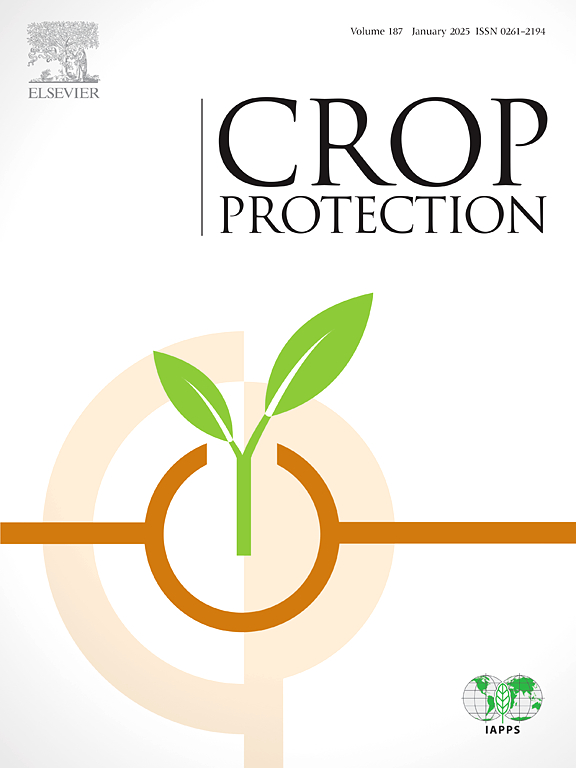Molecular identification and management of Ralstonia pseudosolanacearum (Phylotype I) causing bacterial wilt of tomato using copper oxide nanoparticles in Himachal Pradesh, India
IF 2.5
2区 农林科学
Q1 AGRONOMY
引用次数: 0
Abstract
Ralstonia solanacearum species complex comprises a group of highly destructive strains causing bacterial wilt in a wide range of plants. This study reports, for the first time, the identification of Ralstonia pseudosolanacearum (Phylotype I) as the causative agent of bacterial wilt of tomato in Himachal Pradesh, India, using phylotype-specific multiplex PCR. The pathogen was characterized as rod-shaped with length ranging from 1.4 to 1.8 μm using transmission electron microscopy. Additionally, the antibacterial efficacy of metal CuO nanoparticles against Ralstonia pseudosolanacearum was evaluated both under in vitro and in vivo conditions. Characterization of CuO nanoparticles was performed using transmission electron microscopy and Fourier transform infrared spectroscopy, revealing particle sizes between 20 and 100 nm and confirming the presence of Cu-O bonds. In vitro tests demonstrated antibacterial activity of CuO nanoparticles, with inhibition zones ranging from 1.75 ± 0.90 mm at 50 ppm to 11.17 ± 2.89 mm at 500 ppm. In glasshouse experiments, CuO nanoparticles reduced bacterial wilt incidence to 25% at a concentration of 500 mg−1 soil, with generally consistent results observed in the subsequent season.
求助全文
约1分钟内获得全文
求助全文
来源期刊

Crop Protection
农林科学-农艺学
CiteScore
6.10
自引率
3.60%
发文量
200
审稿时长
29 days
期刊介绍:
The Editors of Crop Protection especially welcome papers describing an interdisciplinary approach showing how different control strategies can be integrated into practical pest management programs, covering high and low input agricultural systems worldwide. Crop Protection particularly emphasizes the practical aspects of control in the field and for protected crops, and includes work which may lead in the near future to more effective control. The journal does not duplicate the many existing excellent biological science journals, which deal mainly with the more fundamental aspects of plant pathology, applied zoology and weed science. Crop Protection covers all practical aspects of pest, disease and weed control, including the following topics:
-Abiotic damage-
Agronomic control methods-
Assessment of pest and disease damage-
Molecular methods for the detection and assessment of pests and diseases-
Biological control-
Biorational pesticides-
Control of animal pests of world crops-
Control of diseases of crop plants caused by microorganisms-
Control of weeds and integrated management-
Economic considerations-
Effects of plant growth regulators-
Environmental benefits of reduced pesticide use-
Environmental effects of pesticides-
Epidemiology of pests and diseases in relation to control-
GM Crops, and genetic engineering applications-
Importance and control of postharvest crop losses-
Integrated control-
Interrelationships and compatibility among different control strategies-
Invasive species as they relate to implications for crop protection-
Pesticide application methods-
Pest management-
Phytobiomes for pest and disease control-
Resistance management-
Sampling and monitoring schemes for diseases, nematodes, pests and weeds.
 求助内容:
求助内容: 应助结果提醒方式:
应助结果提醒方式:


